Each tire in your car comes with a sensor. If you notice that one sensor is not working as it should, you need to know how to tell which tire sensor is bad.
Your tire sensor, also known as a tire pressure monitoring system, is a small pressure sensor placed in each tire to alert the driver of under or over-inflated tires. In 2007, the NHTSA mandated that all tires have these to reduce mortality rates. However, like every technology, they can fail as well.
If one of your tire sensors fails, the quickest way to root out the bad one is to use a pressure gauge to determine the pressure of each tire. You can also use a TPMS scan tool to diagnose the issue or use the trial-and-error method of releasing air from each tire.
In this guide, we can help you find out the symptoms of bad tire sensors and how to tell which tire sensor is bad. We will also find out what are the causes that result in false readings from the sensors or make it faulty.
As a person who has been driving a car for decades, I have become accustomed to the many vagaries of automobiles and have experienced bad tire sensors myself several times. As such, I can tell you in detail how I handled the situation.
Finding faulty tire sensors is a simple process. There are various ways you can figure out which tire sensor is bad.
The most obvious way to find out if there is something wrong with tire sensors is to check the dashboard display panel in your car. It displays the TPMS indicator which is designed like a stylized U with an exclamation mark in the middle.
If you see that the TPMS light is blinking, it is a sign that there is some issue with your tire sensors. The engine control module which collects all the sensor data on your car will trigger a warning on your display panel which will let you know something is wrong with the car sensors.
Another very easy way to determine whether a TPMS sensor is faulty is to use a pressure gauge to check the air pressure in the tires. Note down the readings on the gauge and then compare them to the TPMS readings on the car dashboard.
Note down the readings on the gauge and then compare them to the TPMS readings on the car dashboard.
If you see a difference in one of the readings, it means that the tire pressure sensor is faulty.
Using a TPMS diagnostic tool is also another very easy way to find out which tire pressure sensor is not working. This tool is very useful in identifying problems with your TPMS sensor, including a drained battery, wiring issues, or problems with the voltage.
If the air is leaking out of the tire or coming into the tire, the tire sensor will send a signal to the TPMS which will result in a horn chirp. This is a sign of a well-functioning sensor. However, if there is no chirp when the air comes out or goes into the tire, it means that there is an issue with the sensor.
Although it is also a good way to find whether your TPMS is working fine or not, it can be a bit tiresome since it requires you to fill each tire with the recommended air pressure and then release the air — and then refill them again so that you can drive your car.
Fill the tires with air and then slowly release it, one tire at a time. Then check the car’s display panel to see if the warning light is blinking each time. If you do not see an alert when releasing the air from the tire, it means the tire pressure sensor in that tire is defective and needs to be replaced.
Once you have identified which tire it is, mark that tire and make sure to fill it up with the right amount of air before you have had a chance to get the sensor fixed. Also, fill the rest of your tires with the right air pressure before you take out your car.
If a TPMS develops a fault, you will be able to detect several noticeable changes in your vehicles. Some of the ways you can recognize a defective tire sensor are:
The main function of the tire sensor is to warn you if your tire is low on air. So if you notice that your tire does not have enough pressure or that they have gone flat and you did not see a warning light on the dashboard, it means that the TPMS failed to send a signal to your car’s ECU.
If one or both of your front tires are low on air pressure, their sides will become soft and flat which will make it difficult for you to keep your steering wheel straight and steady.
If you are experiencing a jerky steering wheel, it might be due to underinflated tire. And if the TPMS indicator fails to light up, it means there is something wrong with your tire sensor.
When your tire is leaking air, the friction between the ground and the tires increases, which means the car engine has to exert more effort to keep you moving. This makes it burn up more fuel and you will see your fuel consumption increase significantly.
If you cannot detect any obvious reasons why your car is burning fuel excessively, it is worth your while to check the tire air pressure and see if the tire sensor has developed a fault.
Your car’s anti-lock braking system ensures good road traction by preventing your wheels from locking up and skidding on wet or slippery surfaces. However, if any of your tires have low air pressure, your car’s ECU will sense abnormal speed and it will send an inaccurate signal to your ABS which will light up the warning signals in the dash.
However, if any of your tires have low air pressure, your car’s ECU will sense abnormal speed and it will send an inaccurate signal to your ABS which will light up the warning signals in the dash.
Hence, if your ABS lights up for no apparent reason, it is a good idea to check your air pressure and TPMS.
If your TPMS is not working as it should, you might get strange warnings on your DIC. It could indicate that you have an underinflated tire even if your tire has the perfect air pressure. If you get these warnings, it is important to get them checked out and see if your tire sensor is working accurately or not. It may be because your TPMS requires a reset or if its batteries have failed.
The main cause of a faulty tire pressure monitoring system is a defective tire sensor. So what are the things that can make your tire sensor go bad?
Your tire sensors are equipped with batteries that have a lifespan of anywhere from five to 10 years.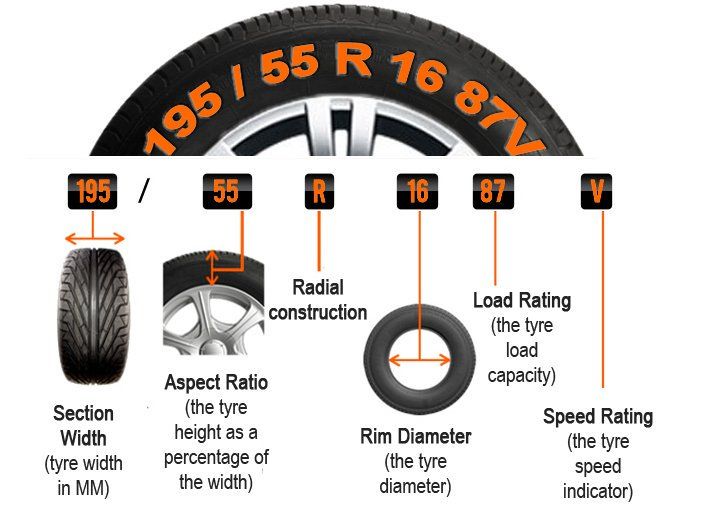 The life of the tire sensor’s battery can vary depending on how frequently you drive your car. If you drive your vehicle very frequently, your sensors will be used more and will drain the batteries faster.
The life of the tire sensor’s battery can vary depending on how frequently you drive your car. If you drive your vehicle very frequently, your sensors will be used more and will drain the batteries faster.
In addition, the temperature and traffic conditions also have an impact on the life of a tire sensor’s batteries. If you live in a state that has hot summers, it can put a lot of strain on the sensor battery as compared to if you live in more temperate regions.
Moreover, if you experience a lot of traffic jams regularly, they can also take a toll on the tire sensor’s battery as opposed to when you are driving at a constant speed on open highways.
If the battery is low or drained, it might set off malfunction warning signals which will turn on the TPMS light. To fix this problem, you will need to change the sensors in the tires.
Any rust or corrosion on or inside the valve of the TPMS can cause the sensors to malfunction. If you do not fix this issue quickly, it can lead to serious problems for your car, like puncturing your tire when the corroded valve stem snaps.
This issue, however, is only limited to tire sensors that are equipped with aluminum valve stems and not rubber ones.
In the same way, debris and dirt accumulation can also cause the sensors to stop working properly.
Like hot weather, cold weather can also result in inaccurate readings. This is because the cold can compress the air in the tire, which can mess up the readings. However, keep in mind that this does not mean that your TPMS is irrevocably damaged.
If you live in colder states, it is a good idea to let your car run three or four miles, give them a chance to heat up the air inside, and then check the reading of the TPMS.
Yes, as strange as it may seem. If you have recently got your tire changed, it could be that you damaged the tire sensors when removing the tire aggressively with a tool like a pry bar. This is because a lot of the equipment used to change a car’s tire was not designed to plan for the eventual installation of the TPMS in the tires. During a tire change, the TPMS installed on the rim can get snagged by the tire and become damaged.
During a tire change, the TPMS installed on the rim can get snagged by the tire and become damaged.
Fortunately, there is a way you can prevent your TPMS from being damaged during a tire change:
Typically, a tire sensor can cost you anywhere between $50 and $250. If you think that the tire sensors in all four of your tires have gone bad, you can expect to pay between $200 and $1000 for buying the sensors.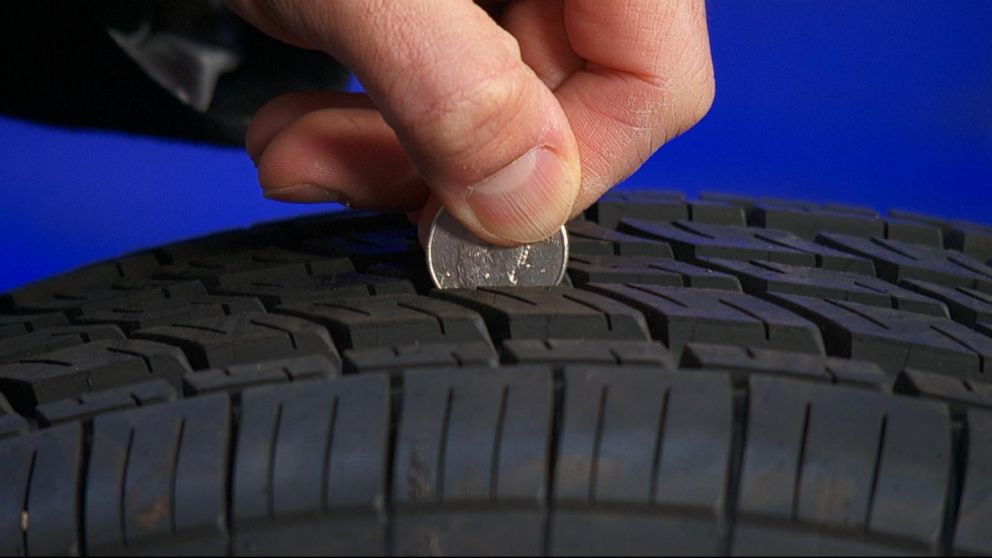 If you do not know how to replace the tire sensors yourself, you can get them installed by any car workshop for about $10 to $30 for each tire. This will bring your total cost to about $240 to $1,120.
If you do not know how to replace the tire sensors yourself, you can get them installed by any car workshop for about $10 to $30 for each tire. This will bring your total cost to about $240 to $1,120.
As you can see, this is not an unsubstantial sum so it is a good idea to check the car mechanics in your area to make sure they can do the job adequately. Not every mechanic is experienced or even a mechanic and if you go for dirt-cheap service, there is a high chance your TPMS may not be properly installed or become damaged in the process.
This can lead to serious issues with your car’s tires as well as put you at a higher risk of road accidents. Therefore, only enlist the services of a certified and experienced mechanic, even if they charge you a bit more since they will get the job done the right way.
Also, keep in mind that you need to reset the TPMS light every time you get the sensor changed.
The TPMS has made it easier for drivers to perform tire maintenance. The TPMS system has been designed to monitor the air pressure in the tires and to notify them in case anything goes wrong. All in all, the system has added another level of safety to driving by ensuring you do not suffer from a tire blowout that can lead to terrible road accidents.
The TPMS system has been designed to monitor the air pressure in the tires and to notify them in case anything goes wrong. All in all, the system has added another level of safety to driving by ensuring you do not suffer from a tire blowout that can lead to terrible road accidents.
That is why it is important to ensure your tire sensors are working properly and keep a watch for the various symptoms of faulty TPMS. If you do notice something amiss with the sensors, it is best to get them checked out rather than risking your safety on the road.
Table of Contents
TPMS (Tire Pressure Monitoring System) is a preinstalled system in modern cars that monitors your vehicle’s tires’ pressure.
It computes the air pressure in your vehicle’s tires and alarms you if the air pressure is abnormal.
If tpms sensor reading wrong pressure, then finding a faulty tpms sensor is not a big deal.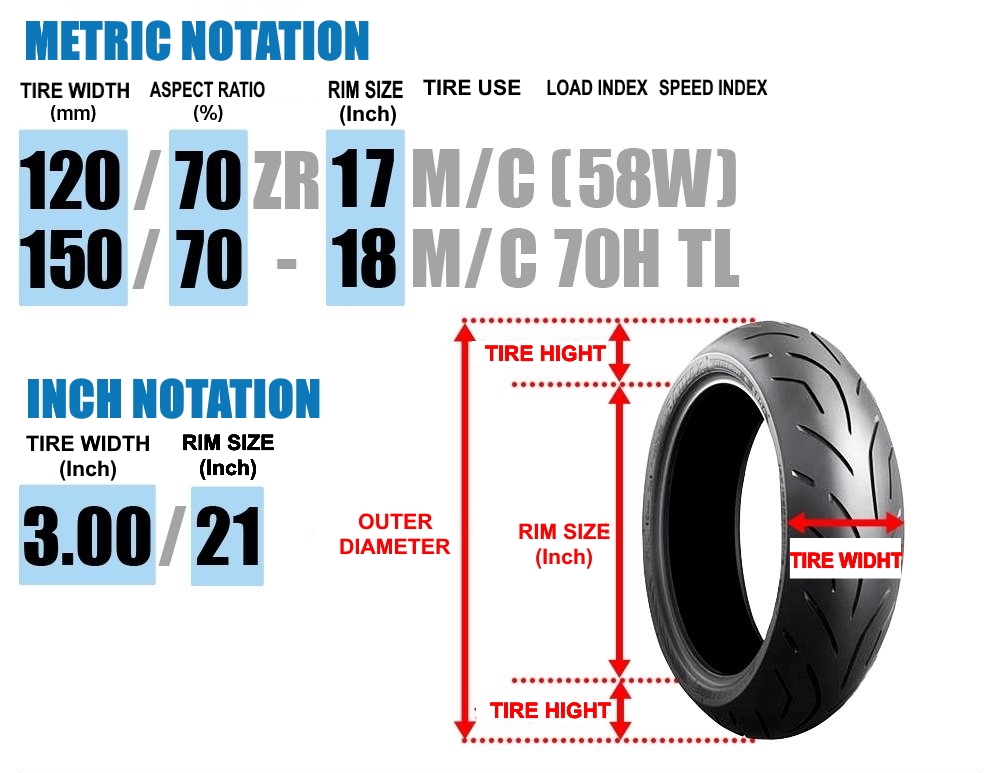 You can adapt the following methods to find faulty tpms sensor:
You can adapt the following methods to find faulty tpms sensor:
Firstly, you need to look for a tire pressure sensor fault on the dashboard display panel.
If you notice the tire pressure light blinking, it is an indication of some fault in TPMS. The ECU or PCM, which gets all the sensors’ data, triggers an admonition on your dashboard, demonstrating that something isn’t right with the sensors.
For example, a tire pressure sensor is not working as per the norm; the tpms sensor light will be on.
Hence, you will receive a notification on your very dashboard display panel about the fault in the TPMS.
TPMS scan tool helps identify all sorts of faults in a TPMS sensor, including a drained battery, a failed voltage supply or wiring problem, etc.
Most vehicles have a tire pressure sensor relearn mode or retrain mode, which means that the sensor sends signals to the tool if air comes in or goes out of the tire.
The signal is what initiates a horn chirp, which is an indication of a healthy sensor. If you don’t hear a squeak, the sensor is faulty.
Before getting your hands onto the TPMS tool, check the tires’ air pressure. You can also confirm the sensor’s reading by checking the tire’s real pressure with a pressure gauge.
This process is a bit tedious, but it’ll get you to identify the problem. All you need to do is fill up all four tires up to the recommended pressure.
Gently release air from the tires one after the other and check the car display panel. The tire(s) that does not send the message has a defect and needs replacement.
Once you have identified the problem, mark the wheel(s) and make sure to refill the tires with adequate air.
Using a pressure gauge is a good idea, too, if you are looking for a faulty TPMS sensor. Measure the air pressure in all the tires and note the reading.
Compare the gauge’s readings to the one shown on the display panel. If there is a difference in reading of any sensor, then it is faulty one,
A Tire pressure gauge is quite a handy piece of equipment so having one is a smart idea. See the latest price here.
Fill all tires with recommended air pressure. Now, you need to release air from each tire, one after another. Keep noticing the display panel for any message. You will observe that the tire, which does not display correct pressure or out-of-range message to the car display panel, depicts a faulty sensor.
This is one of the easiest methods of checking which tire pressure sensor is bad. You can mark the tire with a faulty sensor and get it to replace it while refilling the tires, which are at no fault.
The quick and easiest way to know which tire pressure sensor is bad is by using a pressure gauge.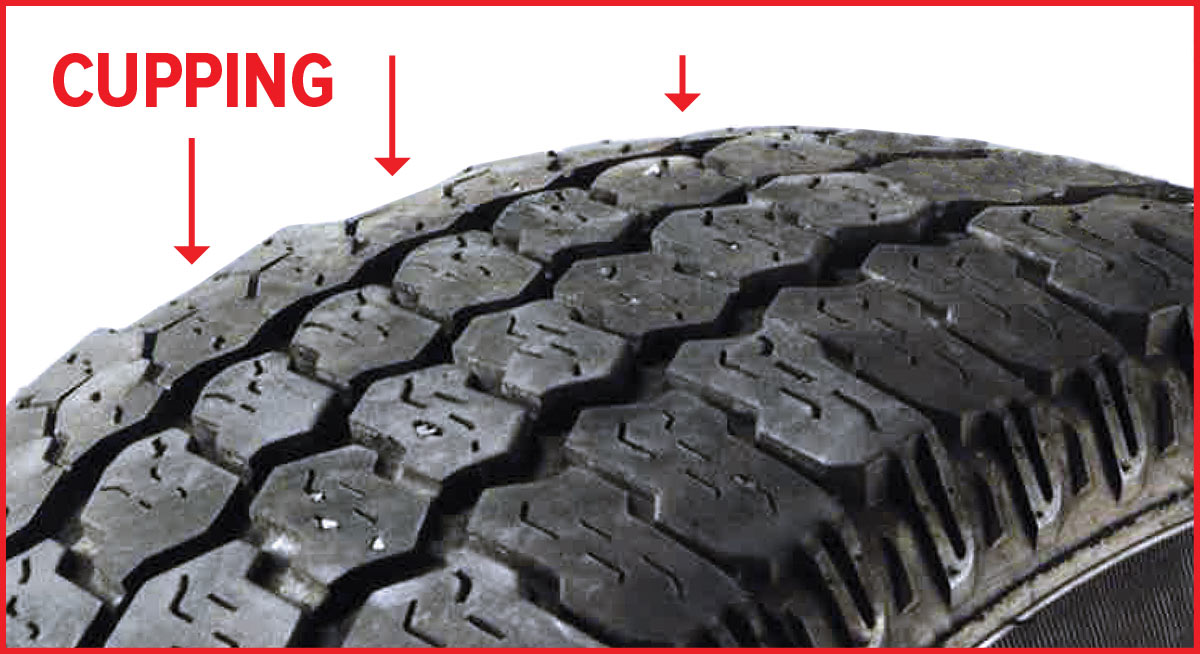 This tool can help in determining the tire pressure.
This tool can help in determining the tire pressure.
Thus, you need to verify the final reading from the gauge with the pressure shown in the TMPS display panel. If the pressure matches, the sensor is all good. However, if there exists a discrepancy in the reading, it signifies the particular tire sensor as a faulty one. See the latest price here.
There are some quite noticeable changes in the vehicle when a TPMS sensor goes bad. It can be due to dirt, dust, heat, etc. that can lead to it malfunctioning.
Here are some of the most common symptoms of a bad tire sensor system:
A small light illuminates at the dashboard’s display panel whenever there is a problem with the tire pressure sensors.
It appears as a vivid yellow exclamation point inside of a U symbol; you’d be easily able to spot it. As soon as it turns on, the driver must check the tire for less or no air.
When the vehicle’s front tires are low on the air pressure, the tires’ sides become softer, which makes it hard for the driver to keep the steering wheel steady and straight.
Therefore, an underinflated tire can result in a jerky steering wheel, jolting left and right even when trying to keep it straight.
When a tire goes flat, the friction between the ground and the tires increases, which requires higher traction to move.
As the engine burns more fuel to make up for that power requirement, the fuel consumption increases up to a great extent, which would be pretty noticeable.
The indirect tire pressure monitoring system enables the wheel speed sensor to monitor the ABS (anti-lock braking system).
ABS keeps the wheels of the vehicles from locking up and makes sure they keep a good grip on the road.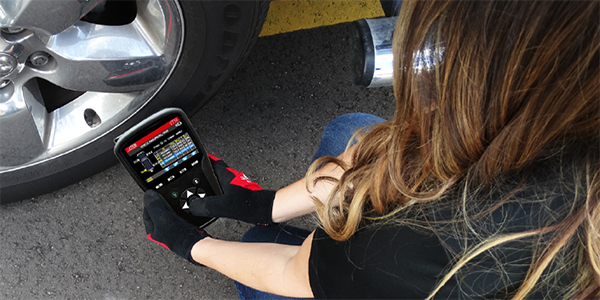
However, it is common for anti-lock braking systems to light up when a sensor becomes faulty or has a bad connection.
There might be many possible reasons for this concern. It may be because your TMPS needs a reset. Moreover, this might also happen because of dead sensor batteries or a poor signal receiver.
If you have recently fueled up a tire with air, you might need to run a few miles to resolve this issue.
I frequently see people dealing with tire pressure light keeps coming on even when their vehicles’ tires have the right amount of air pressure.
This problem might occur due to the following reasons:

You might want to give the sensor at least 3-4 miles after filling the tires with air to receive the signal and show a reading.
In order to check the TMPS sensor, you would need to shift the car to program mode. Hold and press the TMPS tester button but make sure to keep it near to the sensor. If your car chirp at the press of the button, it shows that the tire sensor is fine. However, if it doesn’t chirp, then it signifies a faulty tire sensor.
Furthermore, with the help of the same tester, you can test the TMPS sensor’s battery life as well. Click Here to Buy an Autel TPMS Relearn Tool now.
Has it ever happened that you were changing a tire and end up damaging the TPMS sensor? Relax; it happens to a lot of us.
It happens because the run of the equipment used to both mount and descent a tire to the wheel was, deplorably, not planned considering TPMS.
Here are some steps that’ll help you remove or change the tire without damaging the TPMS sensor:
Regardless of what vehicle you own, a TPMS reader is the easiest way to detect a faulty TPMS sensor. Switch your vehicle into program mode.
Switch your vehicle into program mode.
Hold and press the TPMS tester button near the sensor and wait for the chirping sound. If you hear the squeak, the sensor is fine, but if there is no sound whatsoever, there is a faulty sensor.
To test the TPMS sensor’s battery life, you can use the ATEQ VT30 Universal TPMS Activation and TPMS Reset Tool.
This same handheld device is straightforward to use and works perfectly for almost all vehicles. It makes the process of resetting the TPMS by activating the sensors.
Another great thing about this tool is that it displays useful sensor information like sensor ID, battery frequency, temperature, tire pressure, etc. See the latest price here.
The tire sensor replacement costs depend on the type of vehicle you own. It includes the model of the car and the kind of tire pressure sensor used in it.
It starts from around $80 and can go up to $250 to replace a faulty TPMS sensor.
If you are thinking about adding tpms to older car or a car that don’t have one, then here is a universal tpms sensor kit which fits almost every vehicle
CACAGOO Wireless TPMS Tire Pressure Monitoring System with 4pcs External Sensors (0-8.0 Bar/ 0-116 Psi)
Providing simultaneous monitoring to all tires gives the first admonition of air releases and other strange tire conditions so that you can take remedial measures.
An effective CR1632 battery fuels the wireless sensors, and the screen connects to the cigarette lighter.
The wide-calculated screen makes it simple to peruse from any point day or night. No sweat of discernible and noticeable alarms, the gadget substantiates itself very helpful.
The sensor on each tire is IP67 evaluated, which means it is fixed against any accumulation and keeps up good performance regardless of the roads’ condition.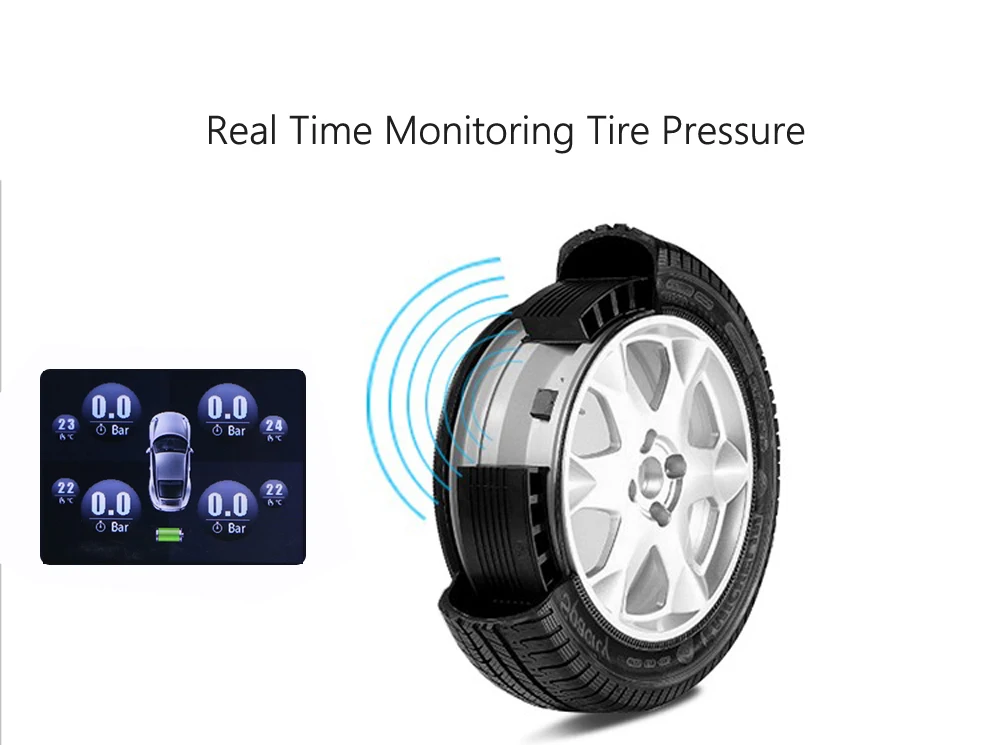 See the latest price here.
See the latest price here.
Tire Pressure Monitoring System ( TPMS - Tire Pressure Monitoring System ) is not installed on all vehicles. It refers to additional options and is aimed at timely detection of excessive deviations from the norm of air pressure in tires. You can mount it both independently and at an authorized dealer or in any car repair shop.
Tire pressure monitoring system
The monitoring system consists of:
Important! When purchasing pressure sensors for the first time, it is better to first call in a car service to be told which type of them is suitable.
Not all cars are equipped with on-board computers, you may have to buy equipment with a remote display to install it in the cabin.
The whole system is complex and sometimes fails. Most often, drivers are faced with such a problem - a low pressure signal appears on the display in any of the wheels, although in fact everything is in order. It is necessary to remove the sensor error, otherwise the tire pressure monitoring system will not work correctly.
Malfunctions can be caused by:
These are temporary faults. As soon as the car moves away from the source of the problem, everything will be restored.
This is already a serious problem that needs to be solved. The constantly flashing indicator distracts from driving, and the beep is annoying and does not allow you to concentrate.
Tire pressure drop icon
Pressure sensor error is not uncommon. It has been noticed that owners of car brands such as Ford, Mercedes, Lexus and Kia sportage are especially affected by this. But this is only when installing non-original devices, in suspicious car services, in pursuit of cheapness. As a result, there is a failure in the system and grief, motorists have to look for information on how to remove the hated error and restore the normal functioning of the equipment.
Unfortunately, there is no universal remedy for all vehicles. But still, the actions of drivers in the event of such a problem should be approximately the same.
Checking the tire pressure
1. First of all, you need to make sure that the system is really giving an error.
Drivers are often outraged by a burning indicator, thinking that everything is normal, and the pressure sensors are broken, but in reality everything is not at all like that.
After that, you need to continue driving at a recommended speed of no more than 80 km/h. In this case, you should monitor the indicators. It is impossible to say how much time exactly you need to drive to remove the error icon, it is different for each car. If you listen to the reviews of motorists, then Mercedes and Kia sportage require a longer time period than Ford and Lexus. But more than an hour in any case should not pass.
2. When it is definitely established that the pressure sensor error is present, it is time for the second stage - you must refer to the instructions.
Tire Pressure Adaptation
Each vehicle and optional equipment must have a service manual. They also indicate possible errors and solutions. In most cases, the whole problem is solved by resetting the pressure sensor and rebooting the on-board computer.
They also indicate possible errors and solutions. In most cases, the whole problem is solved by resetting the pressure sensor and rebooting the on-board computer.
3. If the previous option did not help or there is no instruction manual, then you will have to contact a car service.
Tire pressure sensor repair
When choosing a company, you need to pay attention to its reputation and experience of employees, in this case, an auto electrician is interested. The specialist must have all the necessary equipment to diagnose and correct the error. To remove it, the master flashes (reprograms) the sensors. For this, special programs are used. You can try to do it yourself, armed with a tablet with an installed application and special hardware codes. But there is a chance to ruin everything completely.
4. When all else fails, the failure is not fixed, and the auto electrician advises to buy new pressure sensors, then it's time to decide: drive with the indicator light on, turn off the system completely or purchase a new set.
Important! Original sensors are expensive, but last a long time. Clones and used ones are cheap, but their lifespan is not known.
Tire pressure monitoring system helps you drive safely. Therefore, it is necessary to monitor its correctness. When an indication occurs, everything should be checked, and if there was a failure in the system and this is an error, then it is urgent to remove it.
A punctured tire is always very unpleasant. But it is better to know about the flat tire in advance - this is where tire pressure sensors will help.
The first patent for a tire was obtained in 1846, and since then the wheels have been constantly punctured. It is clear to anyone that a flat tire does not bode well. Yes, and dropped pressure can be very dangerous: it’s not for nothing that in the “Daily Maintenance” section of the car’s operating instructions, the item “Checking tire pressure” is one of the first.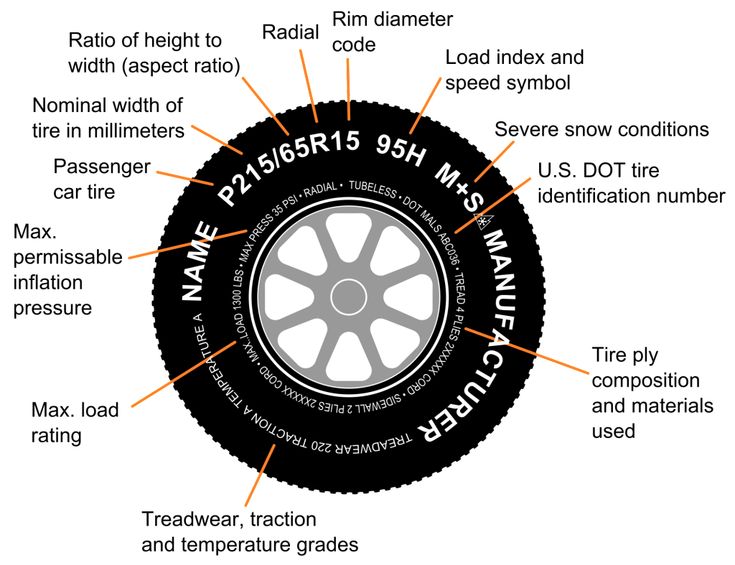
When a tire "breathes", the rolling resistance increases significantly. Where does this lead? To an increase in fuel consumption, increased tire wear and, of course, to the side slip of the car. Moreover, such a small drift to the side can be attributed to the slope of the road or rut. So the driver, by mistake or inexperience, can continue to move for quite some time. And the most dangerous thing about this is that in an emergency, for example, during a sharp maneuver or braking, a flat tire can break off the disc or turn over. And here it is not far from the accident.
Therefore, this disgrace must be fought with all our might. And the sooner the driver notices the loss of pressure, the better. Of course, the easiest way is to check the pressure before the trip by connecting a pump or pressure gauge to each wheel in turn. But we are lazy and forgetful people. And the pleasure of poking around in the cold or in the rain with appliances is small. Moreover, there is already a whole bunch of systems that can check this very pressure.
Chinese made caps indicate pressure loss by changing color. Informativeness is good, accuracy is questionable.
The simplest of them are special caps with color indicators, which are installed instead of the standard caps on the boost valves. The pressure has fallen below, say, two atmospheres - a warning yellow (orange, purple) strip will appear under the transparent cover of this. Yeah, it’s clear that something is wrong with the wheel, we need to check it. The pressure has dropped even lower - the cap will “paint” in a different, usually red color, which will indicate the criticality of what is happening. The advantage of this approach is simplicity. Minus - not enough good information content. After all, the caps can only be seen during a stop. Still, getting around the car before the trip, looking at the colors of the caps, is much easier than measuring the pressure every time.
Another disadvantage is that the caps start informing about the change in pressure only when it falls below certain values, which, by the way, can be quite normal for your car and your wheels. So, you need to select them exactly for your car.
So, you need to select them exactly for your car.
The radio sensors of many electronic monitoring systems are mounted on the disk using special clamps.
And in order to notice something wrong while driving, it would be nice to have an electronic system on board that would automatically notify you of dangerous pressure drops. And not just notify, but would do it on time (so that there was time to orient) and without false positives.
The installed control system in this case will warn the driver at the right time about the change in the corresponding parameter and give him enough time to stop the car safely. It is clear that in cases of a serious puncture or explosion of a tire, such systems will not help, since the driver will feel the car pull without any sensors. But with a “slow” puncture, such electronics are simply irreplaceable.
There are, for example, systems that transmit tire pressure and temperature data to the central unit via radio. And there are those who can transmit this data to phones or communicators. Well, it's very convenient.
Well, it's very convenient.
Pressure monitoring system developed by Pirelli. In the simplest version of Optic, it consists of four caps that are installed on regular valves. And they signal a drop in pressure by a change in color.
But there are more tricky systems that work without "real" pressure sensors, but through ABS. It is they who are usually put in the standard configuration of cars. How do they work?
Electronics with the help of sensors determines the speed of the wheels and their relative difference at each moment of time. As you know, when the pressure drops, the height of the tire profile becomes lower. Consequently, the speed of rotation of the wheel with the "sick" tire increases, therefore, the difference in the frequencies of rotation of the wheels on the same axle also increases. As a result, the system captures these changes - and gives an alarm signal.
Acoustic system. Sensors are built into the caps that register pressure, and radio transmitters that provide communication with the central unit.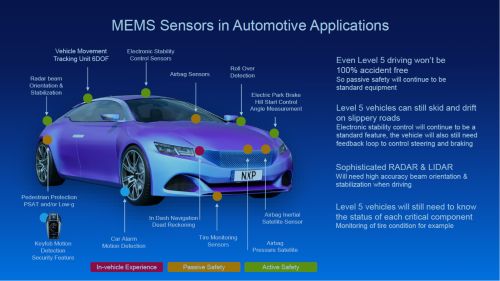 As soon as the pressure has dropped, a corresponding indication appears on the display of this unit and a warning sound signal is heard. Batteries in caps are enough for about 5 thousand hours of operation, which corresponds to five years of operation. Replacement of batteries in the caps is not provided, therefore, at the end of the service life, the set must be changed completely.
As soon as the pressure has dropped, a corresponding indication appears on the display of this unit and a warning sound signal is heard. Batteries in caps are enough for about 5 thousand hours of operation, which corresponds to five years of operation. Replacement of batteries in the caps is not provided, therefore, at the end of the service life, the set must be changed completely.
Why is this indirect method of determining tire pressure bad? Such systems can work, for example, in long turns, when for a relatively long time the system detects a large difference in the rotational speeds of the wheels of different sides (after all, the outer wheels spin at a higher speed than the inner ones). And these are flowers.
One of the more sophisticated options, AcousticBlue can transmit pressure data via Bluetooth to a mobile phone. There is such a thing from 160 euros.
In some cases, such systems are useless at all. For example, when tires with run-flat technology are installed on a car.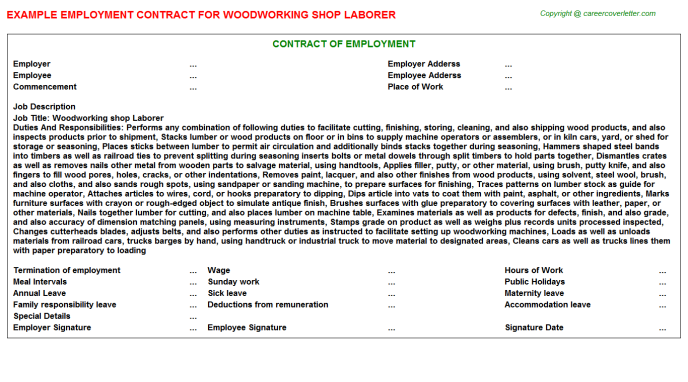 Recall that for tires with this technology, even with a complete loss of pressure, the profile height decreases slightly - by about %. There is no pressure in the tire, and the reinforced sidewalls continue to “hold”, and not just hold, but allow you to continue moving at a very decent speed, for quite a long time.
Recall that for tires with this technology, even with a complete loss of pressure, the profile height decreases slightly - by about %. There is no pressure in the tire, and the reinforced sidewalls continue to “hold”, and not just hold, but allow you to continue moving at a very decent speed, for quite a long time.
Many cars themselves warn their owner of a drop in tire pressure.
Still, this system can help a lot, especially on a long journey, warning you in time that there are problems with the wheels. But relying on "helpers" is not completely worth it. Therefore, instead of the conclusion, we will write only two, no, three words. Watch the pressure, comrades! At least once a week, and if you notice that the wheel is flat, don't be lazy, pump it up.
A modern car is a whole complex of interconnected systems. Wheels are that part of the car, the condition of which depends on the safety of both the driver and passengers. Therefore, experts recommend regularly checking tire pressure. To simplify this procedure, there is a TPMS system. What is this tire pressure monitoring system and how does it work? All this and more - further in our article.
Therefore, experts recommend regularly checking tire pressure. To simplify this procedure, there is a TPMS system. What is this tire pressure monitoring system and how does it work? All this and more - further in our article.
This system has the function of preventing the vehicle from driving with a low level of inflation. It is offered as an option. On some cars (in particular the premium segment), it is already in the "base".
Such equipment works due to a sensor that is installed on the disc, inside the tire. The system includes several components:
The principle of operation ("Hyundai Tucson" is no exception) is the perception by the block of signals coming from each sensor. The last element is a complex device that includes:
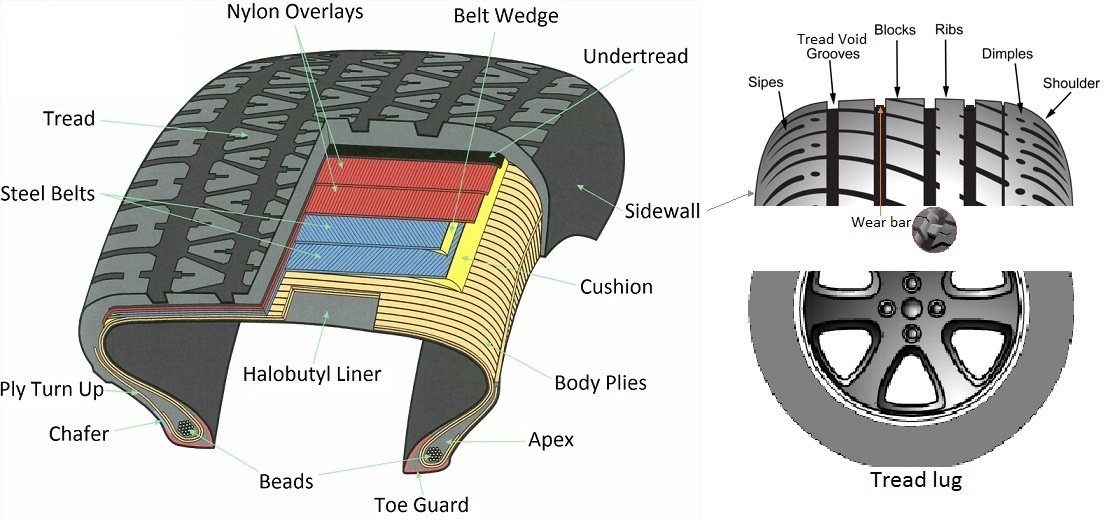
It is often installed in place of the standard valve. Tire pressure information is sent to the unit every 60 seconds. As for the batteries that are located there, the manufacturer has long taken care of this. The battery maintains the wheel sensor for 7-10 years. However, it is not necessary to change it - after this period a new part is installed in place. Therefore, if you purchase sensors, then only not used ones - even the seller will not be able to say how much they left before they were removed and lay on the shelf.
More expensive systems are much easier to control. If 4 individual antennas are installed in the car, a signal will be displayed on a separate panel, which of the tires is currently lowering. The principle of operation of the tire pressure sensor is based on receiving and transmitting information through the antenna to the on-board computer unit. Also, the driver has access to information about the level of inflation in each of the wheels in real time.
Also, the driver has access to information about the level of inflation in each of the wheels in real time.
The first type is the most primitive. They are special caps with a color indicator. They are installed instead of the usual ones on the wheel inflation valve. The principle of operation of the tire pressure sensor is very simple. If the wheel pressure is below 2 atmospheres, the color of the cap changes to yellow. If below 1 atmosphere - red. It will burn green when the pressure level is 2 or more atmospheres, that is, it will be normal. If we make a brief overview of the tire pressure sensor, consider its malfunctions, several factors can be noted. Among the positives are low cost and ease of installation: no need to mount antennas, purchase an additional control unit. Among the minuses, we note the low information content. After all, it is possible to determine whether a wheel is flat or not only manually by putting the car in the parking lot. While driving, this thing is simply useless. But still, looking at the colors of the caps is much easier than twisting them and measuring the pressure with a tester on each wheel.
While driving, this thing is simply useless. But still, looking at the colors of the caps is much easier than twisting them and measuring the pressure with a tester on each wheel.
This is a more advanced type of product. They are installed on the discs using clamps or immediately instead of a regular valve. In addition to these sensors, you need to purchase a set of electronic elements. This is an antenna, control unit and display. This option is much more expensive than the first. But don't forget about reliability. The system will always work, and even being in a car at a speed of 100 kilometers per hour, you will know the current pressure in a particular wheel with an accuracy of 0.01 atm. But if you forget, the system will automatically warn you that the wheel has started to deflate. As you know, it is quite difficult to determine a breakdown on the go (especially if it is a rear, non-driving wheel), especially on low-profile tires.
An inflated tire is the key to safe movement on public roads. Some cars are supplied initially at the factory with a special sensor that allows you to control this parameter. If there are no sensors, you can install them yourself.
Some cars are supplied initially at the factory with a special sensor that allows you to control this parameter. If there are no sensors, you can install them yourself.
Most modern mid-range cars today are equipped with a dedicated tire pressure sensor. This implies the ability to constantly monitor the amount of air in the tires.
The abbreviation TPMS - Tires Pressure Monitoring System is used to designate the system in question. Built into the vehicle from the factory, the system automatically warns of excessively low pressure. The system in question can be purchased, subsequently installed separately. In the USA, the EU and some Asian countries, the installation of TPMS is mandatory for all vehicles without exception.
All sensors that allow you to control the level of air pressure can be divided into two main categories:
They work differently.
This design is the simplest.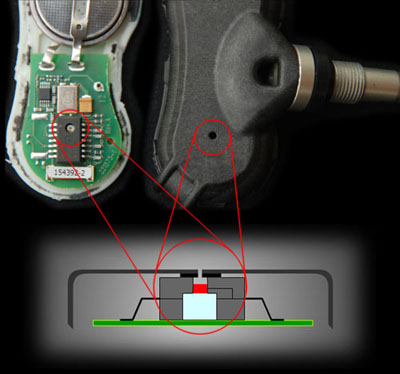 Therefore, its cost is relatively low. In fact, it is an extension of the ABS program block. In fact, the system does not register the absence of pressure, but a decrease in the dimensions of the wheel.
Therefore, its cost is relatively low. In fact, it is an extension of the ABS program block. In fact, the system does not register the absence of pressure, but a decrease in the dimensions of the wheel.
If there is a puncture, air and tire outlet will decrease in diameter. The relevant information is transmitted to the ECU, after which it is compared with the specified standard parameters. The discrepancy detection allows you to determine which wheel has a puncture. Further, the signal about insufficient pressure “lights up”.
Another variation is the measurement of wheel speed. A similar solution is also a subroutine built into the ABS system. The path segment for each bus is determined. Further, the received information is checked, compared with the information recorded in the ABS. A non-compliance is indicated by an appropriate signal.
Since the determination of the proper pressure level is determined on the basis of the obtained data, their comparison, after carrying out service work, a calibration is required. The ECU receives new data for later comparison with information received from the ABS subsystem. The main advantages of the indirect system:
The ECU receives new data for later comparison with information received from the ABS subsystem. The main advantages of the indirect system:
There is also a significant drawback: low accuracy. The threshold for deviation from the specified pressure is 30%.
This scheme involves receiving data from each wheel through a special sensor. The scheme of work assumes the presence of:
The installation of pressure transducers is usually easy. This device is a conventional valve, it is inserted into the wheel instead of the regular one. Information is transmitted to the central control unit via a wireless channel. A certain frequency is set. Usually the interval is 1 minute.
It should be noted that the battery needs to be replaced periodically.
Typically, the life of one battery is 7-10 years. The battery itself is most often a compact battery in the form of a small tablet.
An important part is the receiving antenna. It receives information from all sensors simultaneously and transmits them to the control unit. Usually, the central locking antenna acts as a receiving antenna.
High-end or high-end mid-range vehicles use an individual antenna for each sensor. Such a receiver is usually located in the wheel arch of the vehicle. An important advantage of this design is the ability to control the pressure in all wheels individually. Resetting an error usually does not require special hardware.
The main computing device in such systems is the control unit. It receives information from all sensors without exception. After that, it analyzes them: it compares the obtained values with the standard ones. If they do not match, it displays a message on the dashboard of the car. It is worth noting: not all systems allow monitoring tire pressure on each wheel.
You will need to stop the car, check the level in all wheels, and then fix the problem. Separate systems allow you to display text as well as graphic information on a special display. This greatly simplifies wheel diagnostics and makes it more accessible.
Some TPMS allow you to assess the level of pressure change, determine its intensity:
Certain types of TPMS provide for automatic adaptation: no manipulation of the system is required. In some cases, when replacing tires or sensors, it is necessary to reprogram using special equipment. It is possible to prescribe the necessary values \u200b\u200band independently. But this is not possible on all TPMS models.
It will not be difficult to figure out how the pressure sensor works on your own. All of them can be divided into the following main categories:
Mechanical is a design that transmits data in analog form to a special control unit.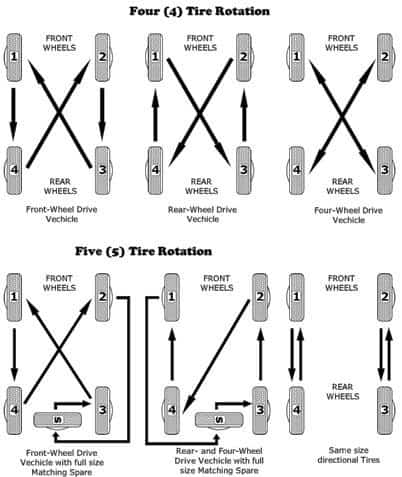 After that, it is converted into a convenient form for perception. The principle of operation of such devices is relatively simple. This is the main reason for reliability. These devices function as well as conventional pressure gauges.
After that, it is converted into a convenient form for perception. The principle of operation of such devices is relatively simple. This is the main reason for reliability. These devices function as well as conventional pressure gauges.
Visually, the mechanical sensors look like an ordinary camera cap – a decorative type. The upper part is made transparent, under it there are 3 coaxial cylinders. They are layers of plastic of different colors. The smallest diameter cylinder is yellow. It is located inside the red. Under pressure, all layers easily move inside each other.
Each color represents pressure. If it is normal, then the color under the cap is green. If a little less than normal, a yellow layer comes out. When falling below 1.5 atm, red color is squeezed out.
Electronic sensors are usually installed inside the wheel. The most convenient, accurate - valve. It is supposed to be installed instead of the standard one installed in the bus. Finding out where the sensors are located is not difficult. Is it easy to understand if needed? how to disable the system.
Is it easy to understand if needed? how to disable the system.
The complexity of self-installation depends on the type of system chosen. For example, conventional mechanical sensors that do not involve data transmission to the central control unit do not require special equipment, wheel disassembly. It is enough to install caps with built-in "pressure gauges".
Valve type electronic sensors are the most popular. Typically, the installation process includes the following main steps:
Sometimes it becomes necessary to install new sensors in place of the old ones. First of all, you need to determine where the system components are located on the vehicle itself.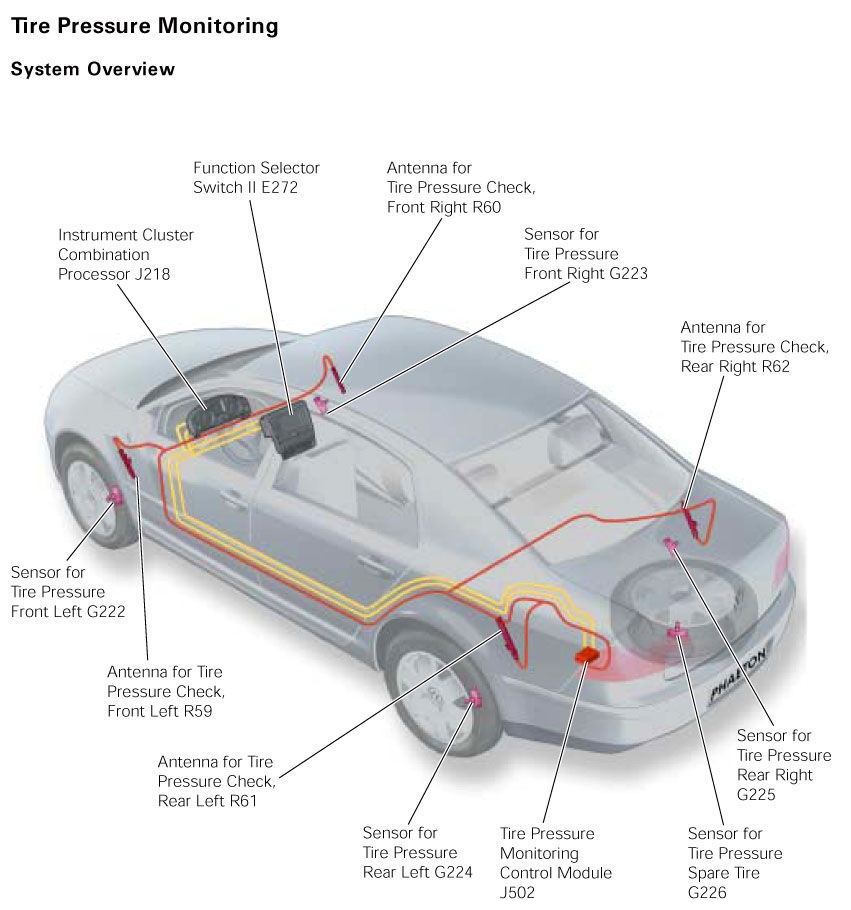 It is necessary to familiarize yourself in advance with all the subtleties, nuances of installation. If there is no proper experience, you should seek the help of professionals. Especially if the car was purchased new and it is still under warranty.
It is necessary to familiarize yourself in advance with all the subtleties, nuances of installation. If there is no proper experience, you should seek the help of professionals. Especially if the car was purchased new and it is still under warranty.
The use of an air pressure control system helps to avoid serious troubles on the road. Often, the driver simply does not notice the puncture of the wheel, continues to drive on a flat tire. The consequence of this may be a burst on the tire. Which will lead to a skid and an accident.
The tire pressure sensor allows permanent monitoring of the wheels. It is only necessary to timely replace the batteries.
Continuous monitoring of tire pressure proved to be excellent in military, and then in sports all-terrain vehicles. In this way, the cross-country ability was improved, quickly lowering and pumping up the wheels, and also protected the cars from punctures and tire shooting.
Article content:
But stable pressure is also important for civilian vehicles, ensuring safety and economy. As a result, various variants of TMPS were developed, which, after the translation of the English abbreviation, means a tire pressure monitoring system.
Anything is possible while driving. Slow punctures, when the wheel loses pressure gradually, fast, but silent depressurization of the rear wheel, which a novice driver may not notice, and simply a deviation from the norm.
In the latter case, nothing terrible happens, but fuel consumption increases, and tire life decreases.
It is unrealistic to force all drivers to follow the main tire parameter. It is much more reliable to provide them with an indicator with the output of readings on the dashboard and an alarm about deviations from the nominal value.
But technically the task is difficult, we had to wait a long time until the technology could allow us to develop and master in a large series relatively inexpensive devices for wide application.
There are several monitoring systems that differ in terms of measuring principles.

The last option is the most common, sensors are installed on the wheels of expensive cars, as well as tuning in the budget segment.
Each transmits telemetry information via radio signal to a common unit. There it is decrypted, the device number and the pressure value are highlighted. The computer knows where which source is located, since when they were initialized, they were registered in the general structure of the car's controllers.
There it is decrypted, the device number and the pressure value are highlighted. The computer knows where which source is located, since when they were initialized, they were registered in the general structure of the car's controllers.
It remains to display information, light and sound warnings on the driver's dashboard or a separate monitor that deals specifically with pressure control.
The battery is part of the wheel sensor. Usually these are reliable and small-sized sources designed for 5 years or more. But if after this period the device began to fail and fail, it may be time to change the battery.
The working conditions of the sensor in the wheel are such that it is difficult for it to survive until the power source is discharged. Overload shock and from fast rotation, vibration, temperature changes, water and dirt - all this will not quickly kill only the most reliable device from a serious manufacturer. Market analogues do not live for more than a year.
The fault signal can be different. Sometimes internal diagnostics is used with the ignition of a control lamp. In other cases, it is easy to notice the discrepancy between the monitor readings and the actual tire pressure. Details can be reported by a scanner connected via the diagnostic connector.
Kits of varying complexity are available for self-installation. They usually consist of sensors, a signal receiver and a monitor for visual reading. The preferred one is where the sensors are mounted inside the tire at the base of the wheel valve. Valves are included. These sensors are much harder to steal in a parking lot.
After installing the system according to the instructions, the sensors are registered in order to know which signal corresponds to which wheel. In the future, care must be taken when mounting tires, the sensors are easily damaged by the tools of the stand.
Setting up the system after mounting the sensors is reduced to their registration. For this, dealer or universal OBD scanners have a corresponding opportunity.
For this, dealer or universal OBD scanners have a corresponding opportunity.
In the section of the program dedicated to the pressure control system, it is necessary to enter in a certain order the IDs of all four sensors that are directly on them.
The system fully accepts the sensors after the test drive, this should take some time. After that, it remains only according to the readings of the scanner to verify the information from the sensors with the real pressure in the wheels, making sure that it works normally.
If not the whole system failed, but only indications from individual wheels are missing, then most likely the sensors are to blame.
There must be no external signs of impacts and other mechanical damage that affects devices placed both on the valve cap and under it.